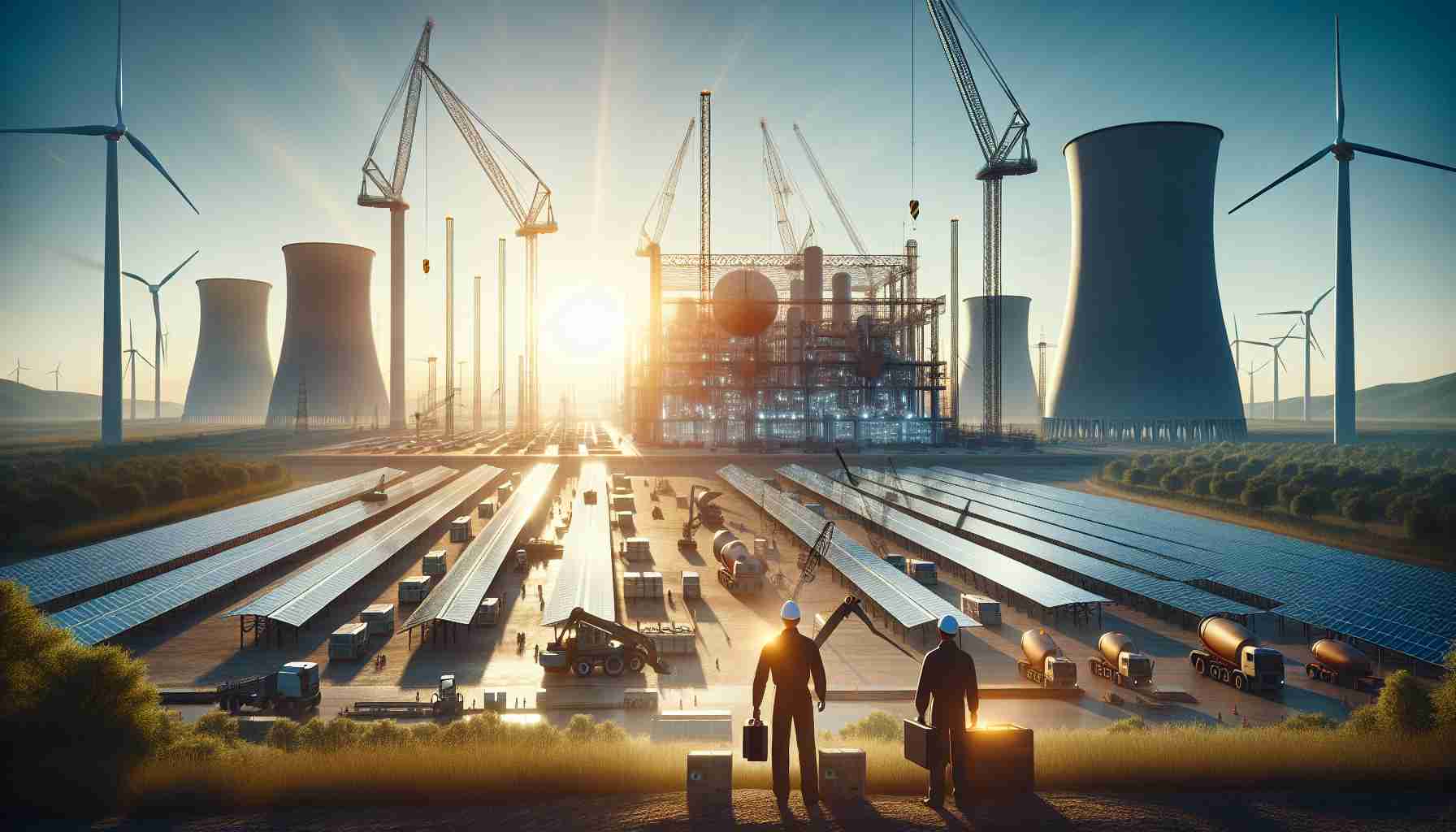Argentina’s President Javier Milei has announced an ambitious plan to utilize nuclear energy for powering artificial intelligence (AI) servers. This initiative aims to address the escalating electricity demands associated with AI technology. It marks a significant pivot towards nuclear energy, which Milei confidently described as the most efficient and scalable solution to support the future needs of society.
Currently, Argentina operates three nuclear power plants, including Atucha I and II, as well as Embalse, which contribute about nine percent of the nation’s energy supply. Recognizing the limitations of existing energy sources, Milei expressed a strong belief in a global resurgence of nuclear energy, especially to meet AI’s growing electricity consumption.
As tech giants look for reliable and sustainable energy sources, many are gravitating towards nuclear power, alongside renewable options like wind and solar. To advance this goal, Demian Reidel, an advisor on Argentina’s nuclear strategy, highlighted plans for a small modular reactor (SMR) at the Atucha site. This technology, still under development, promises to be more cost-effective and easier to deploy than conventional reactors.
International Atomic Energy Agency (IAEA) chief Rafael Grossi praised Argentina’s move as a promising development, reflecting a long history of successful nuclear energy use in the country. Meanwhile, Argentina’s National Atomic Energy Commission has been focusing on the CAREM reactor project, navigating challenges amid budget constraints from the current administration.
Argentina’s Nuclear Energy Initiative: Powering the Future of AI
In a groundbreaking announcement, Argentina’s President Javier Milei has unveiled an ambitious plan to leverage nuclear energy for powering artificial intelligence (AI) servers, underscoring the increasing electricity demands that AI technologies impose on modern infrastructure. This initiative not only signifies a notable shift towards nuclear energy but also positions Argentina as a potential leader in sustainable energy solutions for tech advancements.
Current Nuclear Energy Landscape in Argentina
Argentina is home to three operational nuclear power plants: Atucha I, Atucha II, and Embalse. Together, these facilities contribute approximately nine percent of the nation’s energy mix. While this contribution is significant, there remains a pressing need to expand and modernize the energy infrastructure to support burgeoning sectors like AI.
The Case for Nuclear Energy
Milei argues that nuclear power is the most efficient and scalable solution to meet the demands of an increasingly technology-driven world. With the rapid evolution of AI technologies, the energy consumption requirements are skyrocketing, making it essential for countries to invest in robust and reliable energy sources.
Trends in AI and Energy Consumption
As global tech giants invest heavily in AI, a shift towards nuclear energy is becoming evident. Many companies are seeking dependable energy sources that can support their expansive operations. Alongside nuclear, renewable energy options such as wind and solar are also gaining traction, but nuclear power offers a unique advantage in terms of energy density and reliability.
A Focus on Small Modular Reactors (SMRs)
To actualize his vision, Milei has emphasized the construction of small modular reactors (SMRs) at the Atucha site. SMRs stand out for their potential to be more cost-effective and easier to assemble compared to traditional nuclear reactors. Such innovations could significantly streamline the deployment of nuclear energy solutions and cater specifically to the growing needs of AI technologies.
International Support and Future Prospects
Internationally, Argentina’s initiative has gained recognition, with IAEA chief Rafael Grossi commending the country’s commitment to expanding its nuclear capabilities. The Argentine National Atomic Energy Commission is making strides with the CAREM reactor project, which aims to address some of the financial challenges associated with energy development under the current government.
Pros and Cons of Argentina’s Nuclear Energy Plan
# Pros:
– Sustainability: Nuclear energy offers a low-carbon alternative compared to fossil fuels, aiding in climate change mitigation.
– High Energy Output: Nuclear plants provide a substantial and reliable energy supply, critical for AI operations.
– Innovation: The introduction of SMRs may lead to advancements in energy technology and efficiency.
# Cons:
– Public Perception: Nuclear energy often faces skepticism due to safety concerns and historical incidents.
– Development Costs: While SMRs may be cheaper to build, the overall investment in nuclear infrastructure can be substantial.
– Waste Management: Effective management of nuclear waste remains a contentious issue that requires ongoing attention.
Conclusion
Argentina’s pivot towards nuclear energy, particularly in support of AI infrastructure, represents a forward-thinking approach to modern energy challenges. As this initiative unfolds, it will be crucial to monitor technological advancements, regulatory frameworks, and public perceptions surrounding nuclear energy in Argentina and beyond.
For more insights on Argentina’s nuclear energy strategies, you can visit Argentina’s Government Portal.
The source of the article is from the blog scimag.news



